Best Pick
Guitar Pedal
-
Overall: 9/10
-
Best Feature: Ultimate versatility provided by a variety of controls
-
TedScore™: 9/10
Best Versatile
Guitar Pedal
-
Overall: 9/10
-
Best Feature: Hauntingly beautiful reverb
-
TedScore™: 9/10
Best for Budget
Guitar Pedal
-
Overall: 9/10
-
Best Feature: Intuitive controls with a three-dial setup
-
TedScore™: 9/10
Deep in the heart of the music world lies a mysterious question that has puzzled guitar players for years.
Do I need guitar pedals?
Well assuming you have an Electric Guitar, then I think the answer is yes! And what if we told you that the answer to this question could unlock endless possibilities for your music?
What if I told you that the right combination of pedals could take your sound to the next level and elevate your playing to new heights?
Join me on a journey of discovery as we explore the world of guitar pedals and uncover the secrets that lie within.
Are you ready to take the plunge and discover the true potential of your guitar?
The answer to this question may surprise you.
What Are Guitar Pedals?
Each pedal is designed to produce a specific effect, such as distortion, overdrive, delay, reverb, chorus, or wah.
By connecting these pedals to their guitar and amplifier s
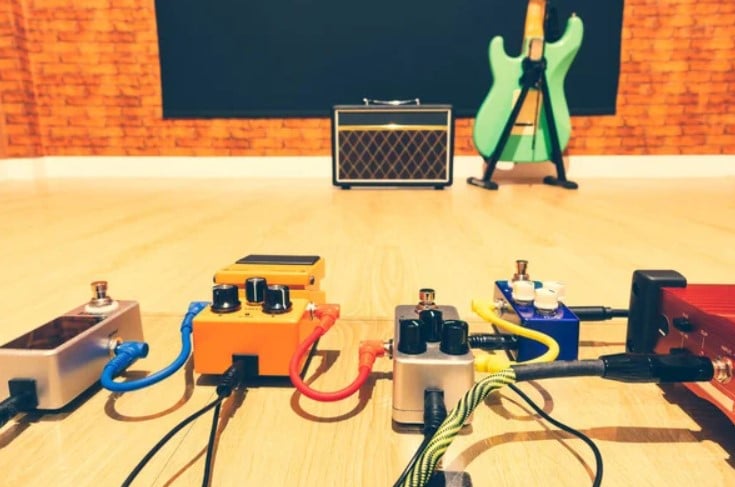
Why Do You Need Guitar Pedals?
There are a myriad of reasons why you might need guitar pedals. First and foremost, they allow you to experiment and create different sounds, helping you find your unique musical style.
Whether you want to add distortion, delay, reverb, or any other effect, pedals allow you to customize your tone to fit your desired sound. They can take your guitar playing to a new level by adding texture, depth, and dynamics to your music.
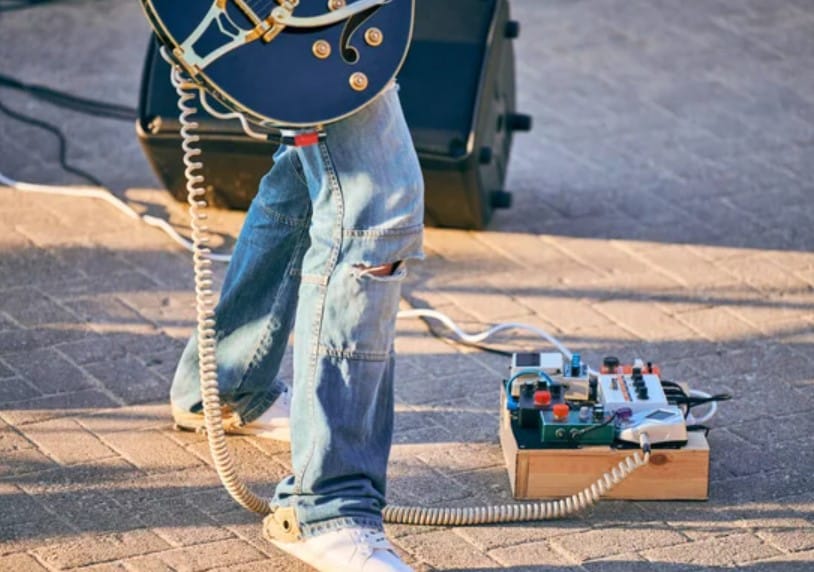
Moreover, guitar pedals can enhance your live performances, allowing you to switch between different effects and create captivating sounds on stage.
Individual Pedals vs Multi-Effects Pedals
When it comes to guitar effects, there are two main choices: individual pedals or multi-effects pedals.
Individual pedals offer a more personalized and customizable approach, while multi-effects pedals provide convenience and versatility by combining multiple effects in one unit.
Now let’s dive into the details of each option.
Individual Effects Pedals
Individual pedals, or stompboxes, are dedicated effect units that typically focus on a specific sound or effect.
They come in various types, such as overdrive, distortion, delay, reverb, chorus, etc.
With individual pedals, you can choose and combine different effects according to your preference, creating a unique and tailored sound for your guitar.
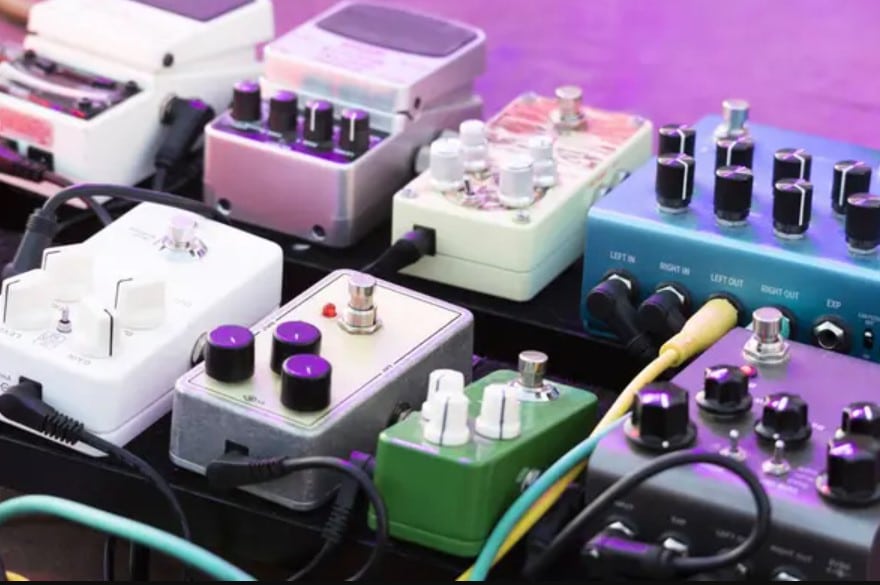
This level of customization allows you to precisely shape your tone, making them ideal for those who have specific sonic requirements or enjoy experimenting with different effects combinations.
However, building a collection of individual pedals can be expensive and requires additional space on your pedalboard.
Multi-Effects Pedals

This makes them a practical option for guitarists who require versatility and convenience for live performances or studio work.
Most multi-effects pedals allow you to save and recall presets, making switching between different sounds on the fly easy.
Different Types of Guitar Pedals
Guitar pedals are essential for musicians and offer endless options to build your unique sound. While there are hundreds of pedals out there, they all essentially fall into one of these five basic categories:
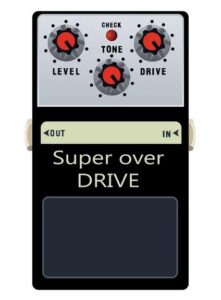
1. Overdrive Pedals
Overdrive pedals produce a slightly distorted sound, increasing the sustain and overall volume. They’re designed to be used with amplifiers, making them one of the most versatile types of pedals.
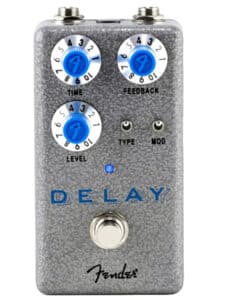
2. Delay Pedals
Delay pedals create a distorted sound that’s reminiscent of an echo.
They can create a range of sounds, from a subtle reverb effect to more intense, distorted swells.
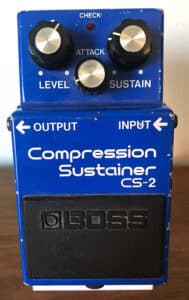
3. Compression Pedals
Compression pedals compress the signal when the volume passes a certain point, making it sound more even and consistent.
These pedals enhance the dynamics of a guitar solo and reduce unnecessary noise.
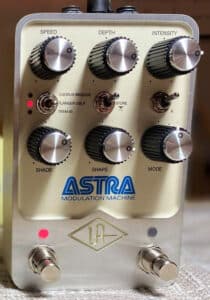
4. Modulation Pedals
Modulation pedals create an effect in which the signal is alternated somehow.
This can range from a basic chorus effect to a more complex flanger or phaser.
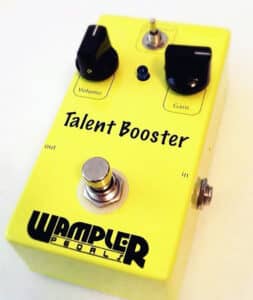
5. Boost Pedals
Boost pedals are designed to increase the volume and clarity of your signal.
They’re handy for soloing, as they can help the guitar cut through various instruments without overwhelming them.
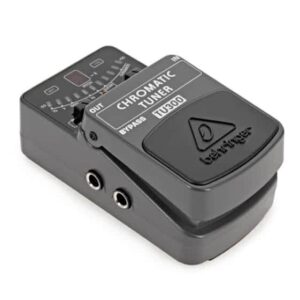
6. Tuner Pedals
A tuner pedal helps to quickly and accurately tune your guitar. It typically features a display screen that shows the pitch of each string, allowing you to make adjustments as needed.
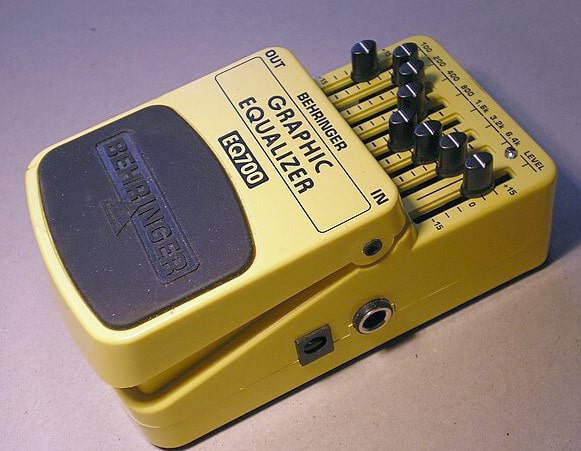
7. EQ Pedals
EQ pedals, or equalizer pedals, are used to shape the tone of your guitar by adjusting the levels of different frequency bands. They typically feature a series of sliders or knobs that allow you to boost or cut certain frequencies, such as bass or treble.
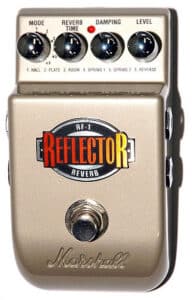
8. Reverb Pedals
Overdrive pedals produce a slightly distorted sound, increasing the sustain and overall volume. They’re designed to be used with amplifiers, making them one of the most versatile types of pedals.
What to Consider When Getting a Guitar Pedal?
Type of Music
Different genres require different effects and tones, and selecting the right guitar pedal can enhance your playing style.
For instance, if you enjoy playing heavy metal or hard rock, you may want to look for distortion or an overdrive pedal to add grit and crunch to your sound.
These pedals are designed to create a thick and aggressive tone, perfect for shredding solos and chugging riffs.

On the other hand, if you prefer blues or jazz, you might want to explore pedals such as compression or analog delay, which can help you achieve smoother and more dynamic sounds.
Size & Portability
The size of the pedal can greatly impact your playing experience and how easy it is to transport.
A smaller pedal can be advantageous as it takes up less space on your pedalboard, allowing you to fit more effects within a limited area. This can be particularly beneficial if you have many pedals or are aiming for a compact setup.
On the other hand, larger pedals may offer more features and controls, but they can also take up a significant amount of space and make your pedalboard more cumbersome to carry around.
Portability is another critical aspect to consider. If you frequently travel or gig, having a lightweight pedal that’s easy to transport can be highly convenient.
Plus, it’s worth mentioning that some pedal manufacturers prioritize creating compact versions of their effects without compromising on sound quality or functionality.
Compatibility to Your Guitar and Amp
While some pedals may work well with any setup, others are specifically designed to complement certain equipment.
Paying attention to compatibility will ensure optimal performance and sound quality.
The first thing to consider is the type of guitar you have.
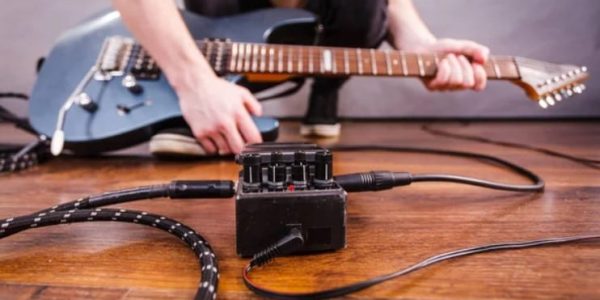
Different pickups, tonewoods, and electronics can affect how a pedal interacts with your guitar’s signal.
Also, the type of amp you use can significantly impact how a pedal sounds.
Tube amps, solid-state amps, and modelling amps have different characteristics that can alter the pedal’s tone and response.
By considering compatibility, you can create a harmonious setup that allows your guitar, pedal, and amp to work together seamlessly.
User Interface
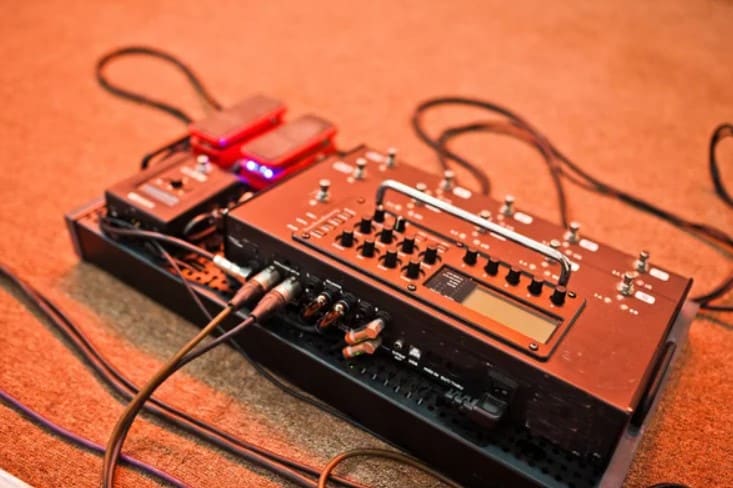
The 5 Essential Pedals You Need
MXR M169 Carbon Copy Analog Delay Pedal
The MXR M169 Carbon Copy Analog Delay pedal is a must-have for guitar enthusiasts. Its compact size makes it easy to fit on any pedalboard without sacrificing performance.
With its warm and rich analogue tone, this pedal provides a delay ranging from 20ms to 600ms. Its easy-to-use controls, including Regen, Mix, and Delay, allow for precise adjustments and limitless creative possibilities.
Best Analog Delay pedal
MXR M169 Carbon Copy Analog Delay Pedal
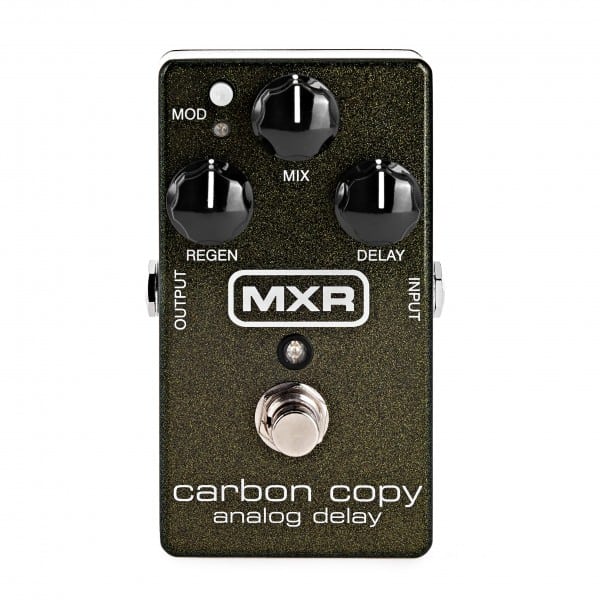
FEATURES: -Explore the ample tonal
possibilities provided by two internal trim pots
-Dial in your sound with ease
using an intuitive control layout
-Easily slots onto busy
pedalboards due to its compact build
- A high-quality, completely analogue stompbox
- Offers authentic, rich, and warm sonics that only analogue, bucket-brigade technology can bring
- Can be noisy at higher settings
When you click ‘Check Price’, you’ll see there are loads of great places to buy this item. Our personal favorite is Sweetwater for the US, and Thomann and Gear4Music for the UK & Europe.
They are the largest music retailers, with excellent customer service, competitive prices, really fast shipping, and the longest guarantees.
The professional musician who wrote this article combined many things,
from the product build, manufacturer’s reputation through to feedback
from other users, to create our famous TedScore™.
EarthQuaker Devices Brain Dead Ghost Echo Pedal
The EarthQuaker Devices Brain Dead Ghost Echo is a phenomenal pedal that takes your guitar’s reverb to a new level. Its hauntingly beautiful tones add a rich, atmospheric ambience to your playing.
The controls are intuitive, allowing you to fine-tune the reverb’s depth, damping, and decay. Plus, the sturdy construction will withstand the rigours of live performances and studio sessions.
Best Echo Pedal
EarthQuaker Devices Brain Dead Ghost Echo Pedal

FEATURES: -Hauntingly beautiful reverb
-Emulates the classic amp-top spring reverbs of yesteryear
-Enjoy consistent performance from true
bypass and silent relay-based switching
- Stands out on your pedalboard thanks to unique Brain Dead custom branding
- Not suitable for extreme delay effects
When you click ‘Check Price’, you’ll see there are loads of great places to buy this item. Our personal favorite is Sweetwater for the US, and Thomann and Gear4Music for the UK & Europe.
They are the largest music retailers, with excellent customer service, competitive prices, really fast shipping, and the longest guarantees.
The professional musician who wrote this article combined many things,
from the product build, manufacturer’s reputation through to feedback
from other users, to create our famous TedScore™.
Mooer MAW2 Envelope Analogue AutoWah Pedal
The Mooer MAW2 Envelope Analogue AutoWah Pedal is a versatile and dynamic effects pedal that brings a new level of fun and expression to your guitar playing.
With its analogue circuitry, it delivers a warm and organic sound that captures the essence of classic wah effects. The pedal features controls for sensitivity, resonance, and decay, allowing you to customize your wah sound to suit your playing style.
Its envelope filter mode provides a dynamic wah effect that responds to your picking intensity, while the auto wah mode adds a rhythmic and pulsating character to your tone.
Best AutoWah Pedal
Mooer MAW2 Envelope Analogue AutoWah Pedal

FEATURES: -A stunning sound thanks to dynamic and high-quality auto-wah effect
-Ultimate versatility provided
by a variety of controls
-Will fit on any busy
pedalboard due to its compact size
- Versatile - allowing you to customise your sounds
- Based on an auto-filter pedal that is loved across the guitar world
- Can be difficult to dial in the right settings
When you click ‘Check Price’, you’ll see there are loads of great places to buy this item. Our personal favorite is Sweetwater for the US, and Thomann and Gear4Music for the UK & Europe.
They are the largest music retailers, with excellent customer service, competitive prices, really fast shipping, and the longest guarantees.
The professional musician who wrote this article combined many things,
from the product build, manufacturer’s reputation through to feedback
from other users, to create our famous TedScore™.
Behringer UC200 Ultra Chorus Pedal
The Behringer UC200 Ultra Chorus Pedal is a versatile tool for guitarists aiming to create rich and textured sounds. With its high-quality analogue circuitry, it offers a warm and captivating chorus effect that adds depth to your playing.
The pedal comes with dedicated Depth, Level, Rate, and Tone controls, allowing you to fine-tune your desired chorus sound. Its robust construction ensures durability and reliability, making it a valuable addition to any guitarist’s pedalboard.
Best Chorus Pedal
Behringer UC200 Ultra Chorus Pedal

FEATURES: -Constructed in a full metal chassis
-Fully customize your chorus thanks to an intuitive
set of controls
-Keep complete signal integrity with a bypass mode
-Perfect for dark stages with status LED
- Offers an impressive amount of tonal shaping options
- Ensures your full signal integrity is upheld with maximum clarity and accuracy
- Can be noisy at high settings
When you click ‘Check Price’, you’ll see there are loads of great places to buy this item. Our personal favorite is Sweetwater for the US, and Thomann and Gear4Music for the UK & Europe.
They are the largest music retailers, with excellent customer service, competitive prices, really fast shipping, and the longest guarantees.
The professional musician who wrote this article combined many things,
from the product build, manufacturer’s reputation through to feedback
from other users, to create our famous TedScore™.
Belcat BDR-614 Blood Drive Pedal
The Behringer UC200 Ultra Chorus Pedal is a versatile tool for guitarists aiming to create rich and textured sounds. With its high-quality analogue circuitry, it offers a warm and captivating chorus effect that adds depth to your playing.
The pedal comes with dedicated Depth, Level, Rate, and Tone controls, allowing you to fine-tune your desired chorus sound. Its robust construction ensures durability and reliability, making it a valuable addition to any guitarist’s pedalboard.
Best Overdrive Pedal
Belcat BDR-614 Blood Drive Pedal

FEATURES:Preserve your natural tone
with the use of true bypass
-Intuitive controls with a three-dial setup
-Built for life on the road with solid steel housing
- Affordable
- Compact size
- Versatile and capable of producing a range of distortion sounds
- Can be too harsh at high gain settings
When you click ‘Check Price’, you’ll see there are loads of great places to buy this item. Our personal favorite is Sweetwater for the US, and Thomann and Gear4Music for the UK & Europe.
They are the largest music retailers, with excellent customer service, competitive prices, really fast shipping, and the longest guarantees.
The professional musician who wrote this article combined many things,
from the product build, manufacturer’s reputation through to feedback
from other users, to create our famous TedScore™.
How to Use Guitar Pedals
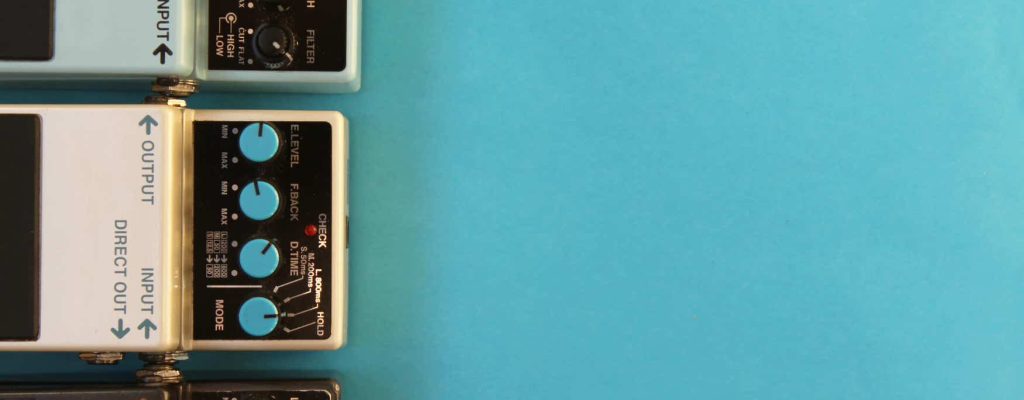
Step 1: Setting Up Your Pedalboard
Once you have chosen the pedals you want to use, it’s time to set up your pedalboard. Here’s how:
Start with Power: Connect a compatible power supply to avoid relying on batteries. Make sure it provides sufficient power for all your pedals.
Take note: using batteries to power guitar pedals is a popular option, but it can work out expensive if you keep having to replace them.
Signal Chain: Arrange your pedals in a logical order. The typical signal chain is: tuner → filters/wah pedals → overdrive/distortion → modulation (chorus, flanger, etc.) → delay/reverb.
Input and Output: Connect your guitar to the input of the first pedal and the output of the last pedal to your amplifier or audio interface. Use instrument cables for the best audio quality.
Step 2: Using Your Guitar Effects Pedals
Now that your pedals are set up, let’s explore how to use them effectively:
Start Simple: Begin using one pedal at a time to understand its effect on your tone. Experiment with different settings and get a feel for each pedal’s sound.
Understanding Knobs: Each pedal will have various knobs to control its parameters. Refer to the user manual or pedal manufacturer’s website for specific controls.
Experiment with Combinations: Combining individual pedals to create unique tones once you’re comfortable using them. Don’t be afraid to experiment and find your signature sound.
Tweak with Gain and Volume: Connecting modulation and time-based effects (delay, reverb) after overdrive/distortion pedals can give you more control over the overall tone.
Tap Tempo Function: If your delay or modulation pedal has a tap tempo function, use it to match the effect timing with your playing for tighter rhythmic synchronization.
Do I Need Guitar Pedals?
The Verdict
So, do you need guitar pedals? The answer is a resounding yes!
Pedals can open up a new world of sound and creativity for your guitar playing, allowing you to experiment with different tones, effects, and textures.
Whether you’re a beginner or a seasoned pro, there’s a pedal out there that can take your playing to the next level.
The possibilities are endless, from the lush warmth of an analogue delay to the gritty crunch of a distortion pedal.
So why not take the plunge and try out some pedals for yourself? You might just discover a new sound that inspires you to create something truly unique.
Happy playing!
Before you go…
Are you ready to discover the secret to unlocking your full potential as a guitar player?
See my new article on The Ultimate Guide To The Different Types Of Guitar Pedals
Get ready to unleash your inner rockstar and take your music to new heights!
FAQ's
Beginner guitarists do not necessarily need pedals; they can still develop their skills and sound without them. However, pedals can be a fun and valuable tool for exploring new sounds and creating unique tones, so they may be worth considering to enhance your playing.
The number of guitar pedals you need depends on your playing style and the sound you want to achieve. Some players only need one or two pedals, while others use a dozen or more. Experimenting and finding the pedals that work best for you and your music is essential.
You can start using guitar pedals at any point in your guitar-playing journey, but it’s essential to have a solid foundation in basic techniques and playing styles first. Once you feel comfortable playing guitar, you can experiment with different pedals to find the ones that work best for you and your music.




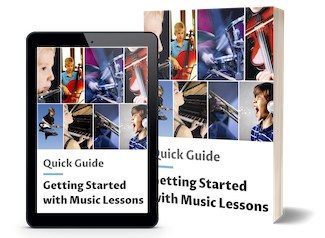






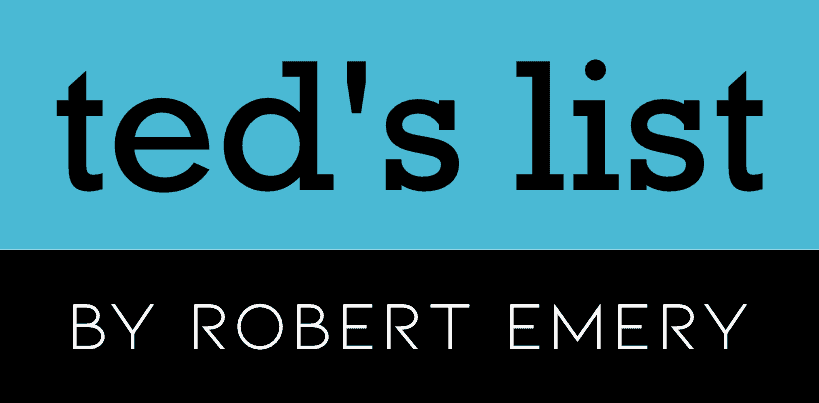
Hugh Richardson, this article is a gem. As someone who’s been playing guitar as a hobby for years without getting too deep into the gear aspect, I’ve found the breakdown of pedals especially enlightening. Understanding the difference between individual effects pedals and multi-effects pedals opened my eyes to the possibilities in crafting my sound. Moreover, the list of 5 essential pedals gives a great starting point for beginners like myself who want to explore without being overwhelmed. It’s articles like these that make the journey into the world of guitar effects less daunting and far more exciting. Thank you for the insights!
Honestly, all this talk about needing a pedal for every effect seems overblown. Back in my day, we squeezed every sound we could out of our amps and a couple of pedals. Are all these specialized pedals really making music better, or are they just making our setup more complicated? Thoughts?
Boost pedals seem cool. never knew they existed before this haha, might try one out.
Hey Hugh Richardson, I’ve been wondering about the actual impact of analog delay pedals like the MXR M169 Carbon Copy in a live setup. Do they really make a big difference compared to digital ones in terms of sound warmth and authenticity? I’m gearing up for some gigs and considering adding this to my setup, but still on the fence.
Not to interrupt, but digital delays have come a long way. Flexibility and precision might outweigh ‘authenticity’ for some setups, especially in genres favoring crystal clarity over warmth.
aleks_m, from my experience, the carbon copy brings a depth to the sound you don’t get with digital. really noticeable on stage and our sound guy loves it.